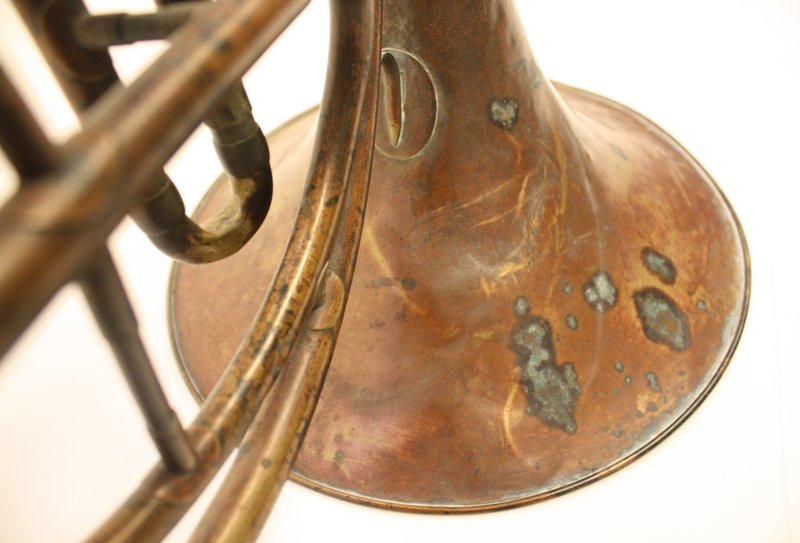 Blechblasinstrumente des 19. und frühen 20. Jahrhunderts zwischen langfristiger Erhaltung und Benutzung in der historisch informierten Aufführungspraxis
Blechblasinstrumente des 19. und frühen 20. Jahrhunderts zwischen langfristiger Erhaltung und Benutzung in der historisch informierten Aufführungspraxis
Die historisch informierte Aufführungspraxis von älterer Musik benötigt als wesentliches Element «period instruments» – d.h. Originale der entsprechenden Zeit oder Nachbauten davon – für Konzertbetrieb, Lehre und Forschung. Der Gebrauch historischer Instrumente aus Metall steckt dabei in einem Dilemma: Ein Instrument, das gespielt wird, erleidet Schäden durch Abnutzung und Korrosion, wenn es hingegen stillgelegt und im Museum verwahrt wird, verliert es seine Stimme, wird auf sein Objekt-Sein reduziert.
Für dieses Dilemma versucht das Projekt, Lösungsansätze zu finden. Dabei werden Korrosionsphänomene im Inneren der Messinginstrumente erstmals erforscht und gemessen. Danach experimentiert eine Langzeitstudie mit Möglichkeiten schonender Nutzung und präventiver Konservierung. Zum Abschluss wird ein Satz von 21 Blechblasinstrumenten rekonstruiert und im Konzert eingesetzt, wie er vor 100 Jahren bei der Uraufführung von Strawinskys «Sacre du Printemps» in Paris gespielt worden sein könnte.
Möglich macht dies eine multidisziplinäre Zusammenarbeit zwischen HKB (Musikwissenschaft, Instrumentenkunde), Sammlungszentrum des Schweizerischen Nationalmuseums (Konservierungsforschung), Paul Scherrer Institut Villigen (Tomographie) und Institute for Corrosion der ETH Zürich (Messmethodik).
Bild: Messing korrodiert von aussen und innen, besonders aufgrund der im Instrument verbleibenden Feuchtigkeit und der Salze im Speichel.
Frontiers in Chemistry
Im April 2020 ist in der Online-Zeitschrift Frontiers in Chemistry ein Artikel von Marzia Fantauzzi, Bernhard Elsener, Federica Cocco, Cristiana Passiu und Antonella Rossi erschienen. Der Beitrag zum Korrosionsprojekt widmet sich dem Schutzfilm im Innern von historischen Blechblasinstrumenten und ist open access zugänglich.
Abstract
The present work focuses on the characterization of brass surfaces after contact with artificial saliva solution at pH 7.4 and phosphate buffer solution at pH 7 simulating two extreme conditions that might occur when playing ancient brass wind instruments in the context of historically informed performance practice. The composition and the morphology of the film formed following the contact with the solutions for 1, 3, and 16 h were investigated by ex situ X-ray photoelectron spectroscopy (XPS) and scanning electron microscopy (SEM) to shed a light on the surface changes upon time. In situ electrochemical impedance spectroscopy (EIS) was used to study the mechanism of corrosion and protection of the alloys. The results could be interpreted using a reliable equivalent electrical circuit; they provided evidence that the alloys behave differently when in contact to the various solutions. In saliva solution the formation on the brass surface of a thick surface film was observed, composed of crystallites of about 200 nm size mainly composed of CuSCN and Zn3(PO4)2. This layer hinders the alloy dissolution. The contact of the alloys with the buffer solution originated a much thinner layer composed of Cu2O, ZnO, and a small amount of Zn3(PO4)2. This film is rapidly formed and does not evolve upon time in a protective film.